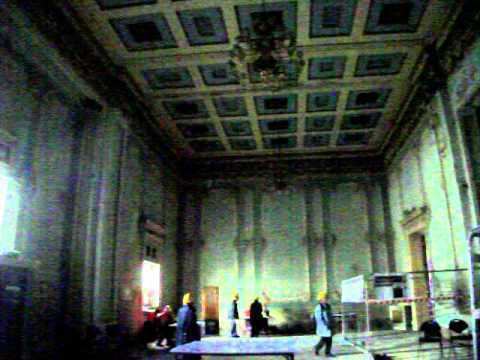Country England Client Wellington Club Town or city Liverpool Construction started 1815 | Completed 1816 Opened 1816 Architectural style Neoclassical architecture Architect Edmund Aikin | |
 | ||
Similar Anfield Cemetery, Welsh Presbyterian Church - L, Royal Insurance Building, The Lyceum - Liverpool, Church of St James - Liverpool | ||
The Wellington Rooms, or as it is often commonly referred to, The Irish Centre, is situated on Mount Pleasant, Liverpool, close to Liverpool Metropolitan Cathedral. The building has been closed since 1997 but there are now plans to re-open the building as a science and technology hub.
Contents
Map of Wellington Rooms, Liverpool, UK
History
The building was designed by the architect Edmund Aikin and built between 1815–1816 as a subscription assembly room for the Wellington Club. It was originally used by high society for assemblies, dance balls and parties. Between 1923 and 1940 it was the Embassy Club and was used for tea dances, classes and weddings. During WW2, the building became the first base for the Rodney Youth Centre though bomb damage in 1941 damaged all of the original ceilings with the exception of the ballroom.
The building officially opened as Liverpool Irish Centre on 1 February 1965 hosting ceilis, music, drama performances as well as serving as a base for clubs and societies.
Neo-classical in style the building's façade is Grade II* listed, but it is now blackened and the building is derelict. The building was designed with a central entrance that leads into an octagonal room from which three further rooms can be accessed from. These were originally used as a drawing room, refreshment room and ballroom. The building had three separate entrances which were intend for men, ladies and sedan-chairs & carriages. The building has now been closed for about 20 years.
Current Status and Proposed Regeneration
The building has been derelict since 1997 and was placed on the National Heritage at Risk Register in 1999. The building suffers from dry rot, dampness and loss of plaster from walls and ceilings which has been exacerbated by repeated lead theft from the roof.
Plans were announced in 2016 to turn the building into a Science and Technology Hub as part of the Knowledge Quarter plans.
Emergency repairs were approved in November 2016 with the work hoping to start in February 2017. £121,000 will be spent repairing the roof and walls to prevent water getting into the building with half the money coming from Liverpool City Council and half from Historic England.
